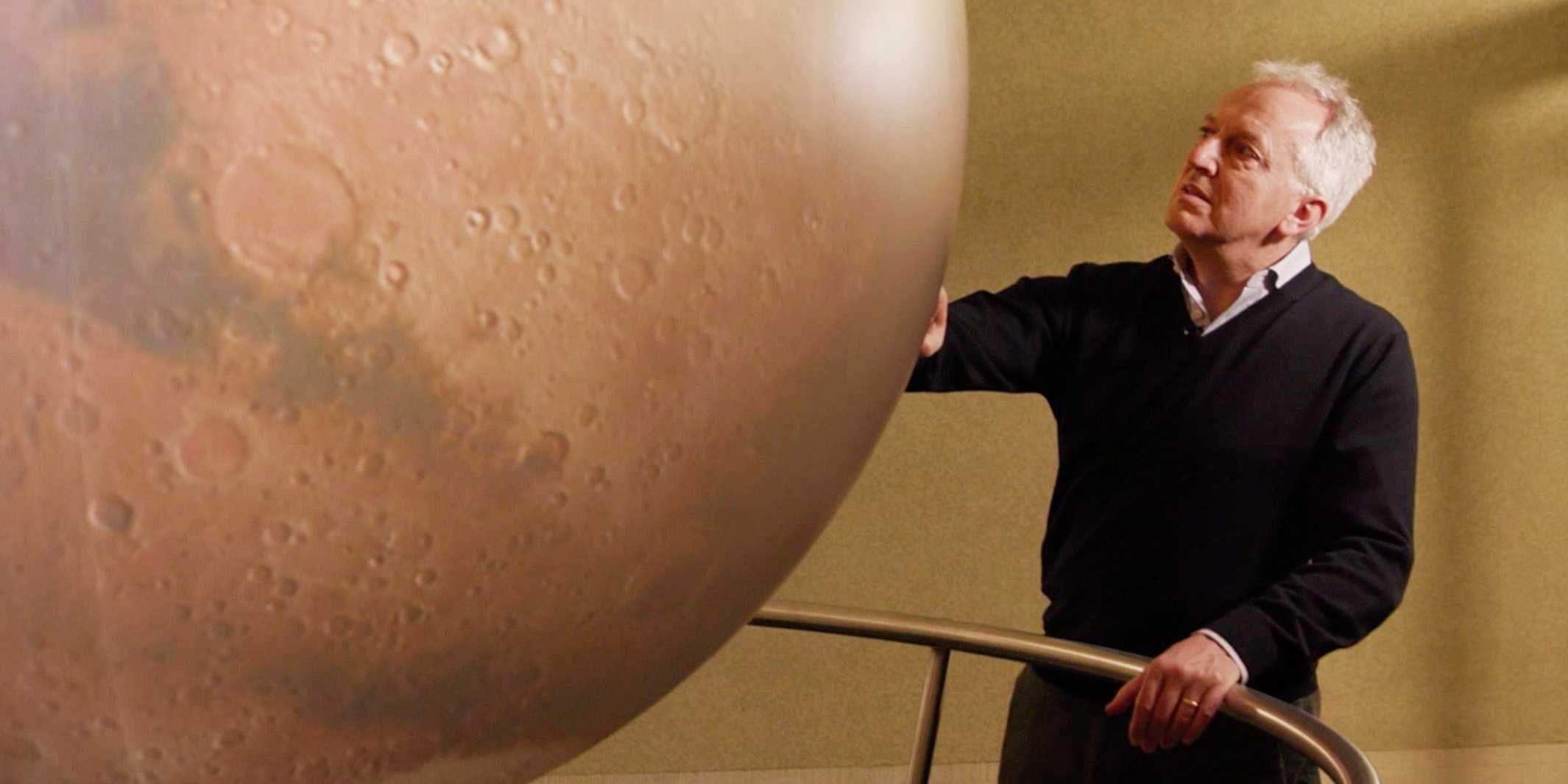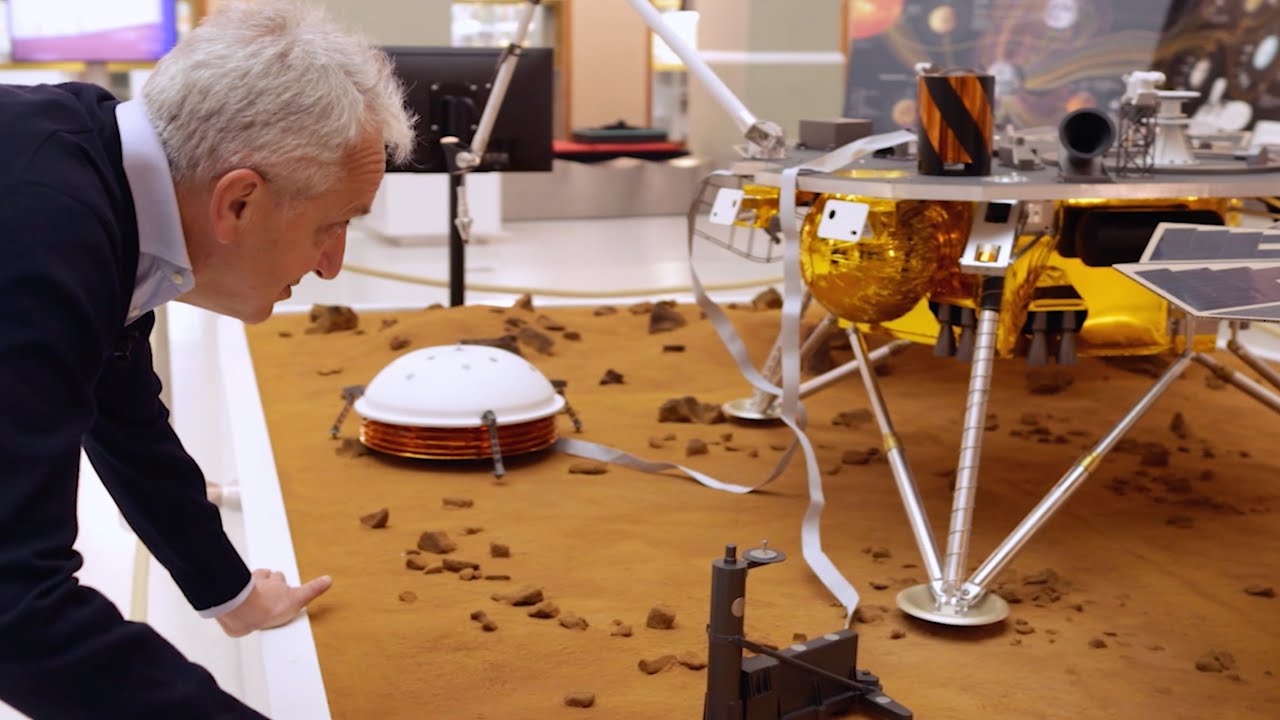The InSight mission on Mars is running out of power and most of its functions could be shut down in the months to come. Some have already been deactivated. However, the attached seismometer, SEIS, will remain in operation for as long as possible. ETH Professor Domenico Giardini takes stock of three years of marsquake measurements.

NASA’s InSight lander successfully touched down on Mars on 26 November 2018. Seventy Martian days later, the seismometer – called SEIS – deployed on the surface of Mars began recording the Red Planet’s tremors. It has registered more than 1,300 quakes so far. These seismic recordings have enabled the researchers to describe the interior structure of Mars more accurately than ever before.
But now the mission threatens to come to an end: the solar panels are supplying too little power because they’re covered in dust. ETH Professor Domenico Giardini, who worked with a team of ETH Zurich researchers and engineers to develop the control electronics for SEIS and is responsible for the marsquake service, explains why, despite these circumstances, he’s not all that pessimistic.
ETH News: NASA is expecting to shut down the seismometer by the end of the summer and the lander around the end of the year as the power supply is no longer sufficient. What is your assessment of this situation?
Domenico Giardini: As we expected, the energy supply deteriorated further in March and April due to the duststorm season. That’s when a lot of dust accumulates on the lander’s solar panels, diminishing the power supply. But there are also whirlwinds that occasionally clear the dust. So we are hoping we still have a bit more time.
And are those sorts of gusts sufficient to clean the panels?
Not entirely. The ultrafine dust is especially problematic as it sticks to the panels due to electrostatic attraction. That’s why NASA assumed that it would no longer be possible to generate enough power to continue the mission once the summer got under way. Now, however, we’re seeing that the energy supply is better than expected and that at least our instrument can continue to operate.
How long will the power last?
We will certainly be able to conduct measurements until sometime in August, and with a bit of luck, even longer. Operations are going well right now: the seismometer is measuring constantly and the lander is uploading data regularly. Starting in July, we will probably only be able to measure for a few hours at a time. We also need to optimise data transmission to Earth. Then we will probably receive data only sporadically.
Despite the imminent end, how, in your opinion, has the mission gone so far?
We are very satisfied. The InSight mission has already lasted almost twice as long as was originally planned and is one of the most exciting projects I’ve ever had the privilege of working on. One of its greatest achievements has been how it has taken science itself a few steps forward. This was a completely new planet to be explored; we knew close to nothing about it or its internal structure. Today, we now know so much more about Mars than we did before.
Is NASA satisfied too?
The internal mission review conducted by NASA this spring was really enthusiastic. NASA was even willing to grant an additional extension of two years if the power supply were guaranteed. The agency has a keen interest in keeping the station alive as long as possible and in continuing with the measurements because they have produced so much of a scientific return.
What didn’t go as well as hoped?
The only thing perhaps is that we hoped Mars was more seismically active, that it had more – and above all larger – quakes with a magnitude of 5 or greater. Before the mission, we had created a map of where we expected seismically active zones to be. But the measurements showed that the tremors occurred at other and fewer locations and that the quakes were smaller. The seismicity occurred primarily in a region that had recently been volcanically active. We had expected that. But the quakes we had expected in other places didn’t occur, which surprised me. In the end, however, we recorded many mid-size events, and these enabled us to map the planet’s interior structure, which was the key reason behind the launch of InSight to Mars.
What does that mean for the analysis?
We had to include in our analysis small and mid-size quakes that we usually would have used less on Earth. It was true detective work! We were unable to use many of the techniques we wanted to apply and we had to design new approaches to single-station seismology. Luckily, we succeeded!
In mid-May, there was a big surprise – and just in time: NASA announced that SEIS had measured a magnitude 5 quake on Mars for the first time. Have you been able to do something with that?
We were eagerly waiting for such an event. After several events of magnitude 4, finally a magnitude 5! This quake also came at the right time. We now understand much more about the seismicity and the interior structure after three years of analyses and can do a lot of new things with the data. It will flow into our further analysis. We are only just at the start of studying waves that travel on the surface of Mars, because such waves are emitted only by large events. In the case of this new event, we observed powerful surface waves travelling several times around Mars, which provided us with an invaluable tool via which to explore the structure of the crust. All the teams are now working flat out!
What is the probability of further large quakes occurring and being recorded in the time that is left?
The magnitude is important, but the combination of magnitude and distance is even more important. For our research, we look for special waves that travel across the core or surface before returning to the planet’s surface. Such waves are even rare on Earth, and on Mars we have seen only a handful. Any new large event can provide us with more information.
“The Insight mission is one of the most exciting projects I’ve ever had the privilege of working on.”Domenico Giardini
So there’s not enough data?
What would be ideal is if we could record a new event outside the volcanic zone, where we’ve already recorded 30 events. We’re studying an entire planet with only ten quakes from different distances. If all these quakes have the same epicentre, even a hundred events wouldn’t help us.
Would it help, theoretically, to place additional seismometers on Mars?
Sure! We don’t see quakes from the other side of the planet if they’re too small. They get lost in the heavy background noise. So we don’t know what’s happening on the other side.
What’s next for Mars research at ETH after InSight?
Right now, the primary focus of the Mars and Moon programmes is to fly people there. That’s not our expertise. We’ll get involved for sure when scientific equipment can go on board, say, to investigate how much water and ice there is on the Moon. We’ll develop devices via which we can search for water at greater depths on the Moon. We’re expecting the call for a project like this in 2022 or 2023. The technology we need for it is similar to that for InSight.
You will be retiring soon. How do you motivate yourself to launch projects that you may never get to see the conclusion of?
I will be a professor at ETH Zurich until 2028, but such major space missions like these are multigenerational projects. All scientists should want to advance even things whose outcome they may not live to see.
So you have no doubt that these kinds of lifetime investments are appropriate?
No. In a country like Switzerland, with all its possibilities, I have no such doubts. I have been working for 20 years on the LISA ESA mission dedicated to the detection of gravitational waves in space. And LISA is not set to launch until 2035. If there’s an ESA call for projects on the Moon, why shouldn’t I apply? I haven’t had anywhere near enough yet!
About Domenico Giardini
Domenico Giardini has been a Full Professor of Seismology and Geodynamics at ETH Zurich since 1997. He has been working on the InSight mission since 1996. One of the goals of this project is to study the interior structure of Mars. Giardini’s professorship has been extended by five years until 2028.
